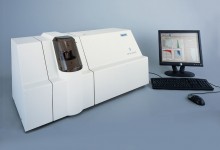Members Login

Channels
Special Offers & Promotions
Malvern particle characterization supports cost control in solar cell manufacture
 Worldwide demand for photovoltaic (PV) solar cells is
fuelling the emergence of a strong manufacturing sector across Europe and Asia.
In support, the Sysmex FPIA-3000 Flow Particle Image Analyzer from Malvern
Instruments is being used to aid cost control and waste reduction by providing
the particle size and shape data necessary for effective recycling of the high
value slurries used in cutting silicon wafers. Silicon carbide slurry
represents a significant cost in wafer manufacture with one estimate placing
the operating cost of running 10 wire saws at as high as $16M per year, making
slurry recycling a highly desirable process
Worldwide demand for photovoltaic (PV) solar cells is
fuelling the emergence of a strong manufacturing sector across Europe and Asia.
In support, the Sysmex FPIA-3000 Flow Particle Image Analyzer from Malvern
Instruments is being used to aid cost control and waste reduction by providing
the particle size and shape data necessary for effective recycling of the high
value slurries used in cutting silicon wafers. Silicon carbide slurry
represents a significant cost in wafer manufacture with one estimate placing
the operating cost of running 10 wire saws at as high as $16M per year, making
slurry recycling a highly desirable process Multi-wire saw cutting processes that rely on abrasive silicon carbide slurries are used to cut silicon wafers for PV solar cells. These allow the slicing of thousands of wafers in a single run. However, over time, the slurry carried by the wire becomes contaminated, creating a build-up of waste silicon and worn abrasive particles and reducing the effectiveness of the wire-saw process.
By monitoring the size and shape of particles present, the Sysmex FPIA-3000 allows optimum control in slurry recycling. In addition, by characterizing the slurry itself, the particle size and particle shape distribution of the silicon carbide can be tuned to enable thinner cuts between each wafer, thereby wasting less raw material.
Capable of measuring tens of thousands of particles in just a few minutes, the Sysmex FPIA-3000 uses imaging flow cytometry to measure suspended particles passing through a sheath flow cell, providing robust data that can be used to optimize manufacturing processes. For further information, please visit www.malvern.com and also see blog entries on www.materials-talks.com
Media Partners


